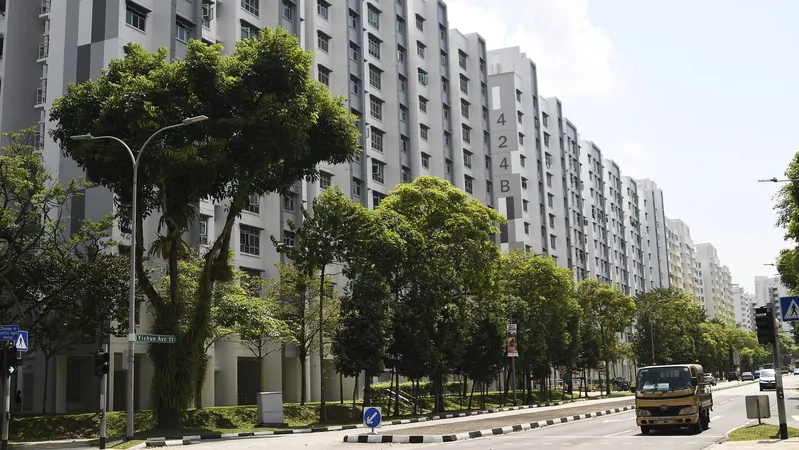
Crucial Factors Singapore Homebuyers Must Consider: BTO Flats vs. ECs
2024-11-18
Author: Yu
Singapore
In the bustling property market of Singapore, potential homebuyers often find themselves at a crossroads while deciding between Building-To-Order (BTO) flats and Executive Condominiums (ECs). Recent insights from DBS highlight several key factors that could influence your choice, and understanding these aspects could lead to significant financial benefits.
1. Aligning with Personal Goals
If capital appreciation is your primary objective, DBS advocates for the consideration of ECs. Historically, ECs have shown remarkable potential for price appreciation, often outpacing BTO flats. For instance, projects that have recently completed their Minimum Occupation Period (MOP) in 2023-2024 saw median prices surge by as much as 90%. Units sized at 900 square feet recorded increases exceeding S$500,000.
DBS posits that the current median prices of new private launches, which stand at S$2,200 per square foot, could provide a solid benchmark for forecasting EC resale values in years to come, especially if underlying household income growth continues to drive demand.
2. Weighing Affordability
Affordability is a crucial consideration for Singapore homeowners. BTO flats represent a more budget-friendly entry point, with down payments typically around 10% and often manageable through HDB loans. Comparatively, ECs require a heftier initial payment of about 25%, generally financed through bank loans. This difference can significantly impact buyers’ financial plans.
For example, the priciest BTO flat to date—a five-room unit at Central Weave in Ang Mo Kio—costs approximately S$877,000, necessitating a down payment of approximately S$90,000. Conversely, a typical EC priced at S$1.4 million requires a down payment around S$350,000—a stark fourfold difference.
It’s also essential to bear in mind the income eligibility criteria for BTO flats, which cap monthly earnings at S$14,000 for families and S$7,000 for singles to qualify for subsidies.
3. Understanding Resale Conditions
When it comes to resale, both BTO flats and ECs enforce a five-year MOP. However, for BTO flats in the Plus and Prime categories, the regulations tighten, imposing a 10-year MOP and additional restrictions. These can include income caps on resale eligibility and potential clawbacks of up to 9% on resale subsidies.
By contrast, ECs enjoy more flexible resale options without strict income caps, making them accessible to a wider range of buyers, including expatriates and corporations, due to a more lenient 55% Total Debt Servicing Ratio (TDSR) requirement.
4. Supply Considerations
One of the most vital factors in choosing between BTO flats and ECs is availability. BTO units see consistent launches approximately three times per year, which means opportunities for buyers come around more frequently. For instance, a total of 8,573 new BTO units were made available in October.
In stark contrast, the availability of ECs is considerably limited, with only one or two new projects introduced each year, heightening the competition and potential for quick price increases.
Conclusion
In summary, as you navigate your decision between BTO flats and ECs, consider these crucial factors—personal goals, affordability, resale conditions, and supply. Each of these elements plays a significant role in ensuring that your investment aligns not just with your current needs, but also with your long-term financial aspirations.
Could this be your golden opportunity to snag a dream home? Act wisely and make informed choices!


 Brasil (PT)
Brasil (PT)
 Canada (EN)
Canada (EN)
 Chile (ES)
Chile (ES)
 España (ES)
España (ES)
 France (FR)
France (FR)
 Hong Kong (EN)
Hong Kong (EN)
 Italia (IT)
Italia (IT)
 日本 (JA)
日本 (JA)
 Magyarország (HU)
Magyarország (HU)
 Norge (NO)
Norge (NO)
 Polska (PL)
Polska (PL)
 Schweiz (DE)
Schweiz (DE)
 Singapore (EN)
Singapore (EN)
 Sverige (SV)
Sverige (SV)
 Suomi (FI)
Suomi (FI)
 Türkiye (TR)
Türkiye (TR)